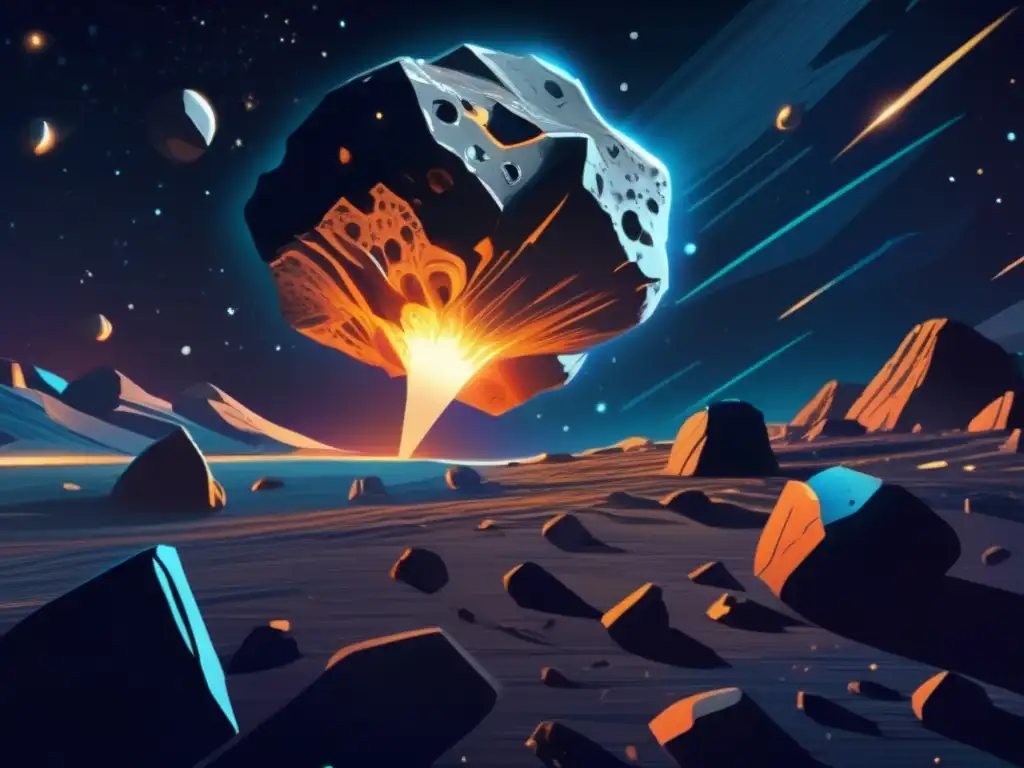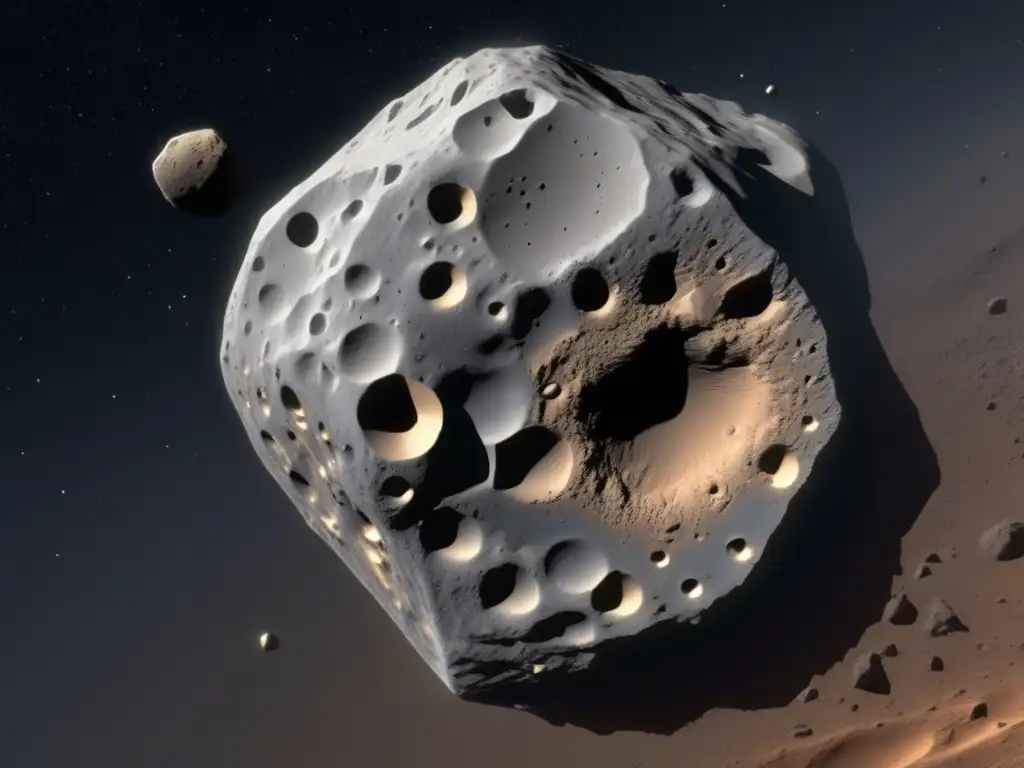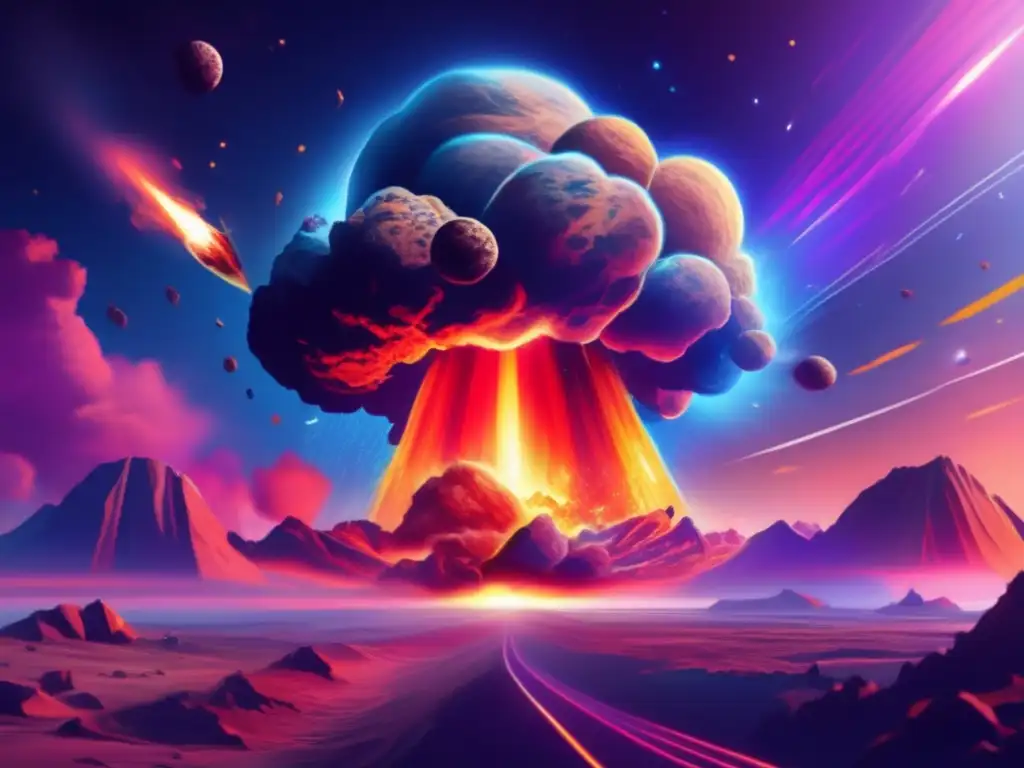Stardust And Stone: Asteroid Composition And Its Impact Consequences

Introduction
Asteroids, those small rocky bodies that orbit the sun, have held the fascination of astronomers and space enthusiasts for a long time. These space rocks, ranging in size from a few meters to several hundred kilometers, have much to reveal about the history and evolution of our solar system. One key aspect of asteroids is their composition, which can vary widely depending on factors such as location, age and formation. In this article, we will dive into the topic of asteroid composition and its consequences when these celestial bodies impact Earth.
Types of Asteroid Composition

Silicate Asteroids
Most asteroids are made of silicate rock, which is similar to the rocks found on Earth's surface. Silicate asteroids are also known as S-type asteroids, named after the prominent spectral feature they exhibit in their reflectance spectra. These asteroids are typically found in the inner asteroid belt, between the orbits of Mars and Jupiter. S-type asteroids contain minerals such as olivine and pyroxene, which give them a characteristic greenish tint. These asteroids are thought to be remnants of the building blocks of terrestrial planets like Earth.
Metallic Asteroids
Metallic asteroids, or M-type asteroids, are composed primarily of iron and nickel. These asteroids are thought to be fragments of the cores of differentiated planetesimals, or small planetary bodies that never fully accreted into full-fledged planets. Metallic asteroids are typically found in the outer asteroid belt and tend to have a reddish hue. Some of the most well-known metallic asteroids include 16 Psyche, which is believed to be the remnant of a protoplanet, and Vesta, which is one of the largest asteroids in the solar system.
Carbonaceous Asteroids
Carbonaceous asteroids are made up of carbonaceous chondrite materials, which are some of the most primitive and unchanged materials in the solar system. These asteroids, also known as C-type asteroids, are believed to be remnants of the early solar nebula, the cloud of gas and dust from which our solar system formed. Carbonaceous asteroids have a dark, almost black appearance, and are primarily found in the outer regions of the asteroid belt. These asteroids may contain organic compounds and water ice, making them potential sources for the building blocks of life on other planetary bodies.
Asteroid Impacts and Their Consequences

Crater Formation
When an asteroid impacts the surface of a planet or moon, it can cause significant damage and leave behind a crater. The size and shape of the crater depend on various factors, including the size and speed of the asteroid, the angle of impact, and the composition of the impacted surface. Large craters can be hundreds of kilometers wide and several kilometers deep. One of the most well-known impact craters is the Chicxulub crater in Mexico, which is believed to have been caused by the impact of a large asteroid or comet approximately 66 million years ago. This impact is thought to have contributed to the mass extinction of the dinosaurs.
Tsunamis and Shock Waves
In addition to crater formation, asteroid impacts can generate tsunamis and shock waves that can cause significant damage to the surrounding areas. The force of the impact can create seismic waves that propagate through the surrounding rock, causing earthquakes and ground shaking. These waves can also generate tsunamis if the impact occurs in an ocean or other large body of water. The Tunguska event, which occurred in Siberia in 1908, was caused by the impact of a small asteroid or comet. Although no crater was left behind, the impact generated a shock wave that flattened trees and caused widespread damage to structures in the surrounding area.
Atmospheric Effects
When an asteroid impacts Earth's atmosphere, it can cause a significant disruption in the upper atmosphere. The heat generated by the asteroid as it enters the atmosphere can cause ionization of the air molecules, creating a bright fireball that can be visible from the ground. The impact can also generate a shock wave that propagates through the atmosphere, creating sound waves that can be heard for hundreds of kilometers. In 2013, the Chelyabinsk meteor entered Earth's atmosphere and exploded over Russia, generating a shock wave that caused widespread damage to buildings and injured over 1,000 people.
Frequently Asked Questions

-
What are the main types of asteroid composition?
The three main types of asteroid composition are silicate, metallic, and carbonaceous.
-
What happens when an asteroid impacts Earth?
An asteroid impact can cause significant damage, including crater formation, tsunamis, shock waves, and atmospheric effects.
-
Are there any asteroids that pose a threat to Earth?
There are several known asteroids that have the potential to impact Earth, but none are currently predicted to pose a significant threat in the near future.
-
Can asteroids provide insights into the early solar system?
Yes, the composition and structure of asteroids can provide valuable information about the formation and evolution of our solar system.
-
How are asteroids studied by astronomers?
Astronomers study asteroids using a variety of techniques, including ground-based telescopes, space probes, and asteroid sample return missions.
Conclusion
In conclusion, asteroids are fascinating objects that hold many clues about the history and evolution of our solar system. Their composition can vary widely, from silicate rock to metallic iron-nickel to carbonaceous chondrites. When asteroids impact Earth, they can cause significant damage and leave behind craters, generate tsunamis and shock waves, and disrupt the upper atmosphere. By studying asteroids, we can gain valuable insights into the formation and evolution of our solar system, as well as potential threats to our planet from these celestial bodies.
We encourage readers to share their thoughts and comments on this topic on our website, Asteroid Realm. Subscribing, sharing the article on social networks, or other forms of participation is also welcomed. Thank you for taking the time to read this article.
Additional Resources

- NASA - Asteroids: https://www.nasa.gov/asteroids
- The Planetary Society - Asteroids: https://www.planetary.org/space-policy-and-advocacy/asteroids-comets-and-meteors
- Asteroid Watch - NASA JPL: https://cneos.jpl.nasa.gov/sentry/
- International Astronomical Union - Minor Planet Center: https://www.minorplanetcenter.net/
 Chasing Shadows: The Search For Undiscovered Impact Craters
Chasing Shadows: The Search For Undiscovered Impact Craters Nature's Own Bombs: Asteroids And Their Explosive Impacts
Nature's Own Bombs: Asteroids And Their Explosive Impacts The Science Behind Asteroid Impacts: An Introduction
The Science Behind Asteroid Impacts: An IntroductionIf you want to discover more articles similar to Stardust And Stone: Asteroid Composition And Its Impact Consequences, you can visit the Asteroid Impacts category.
Leave a Reply

Articulos relacionados: